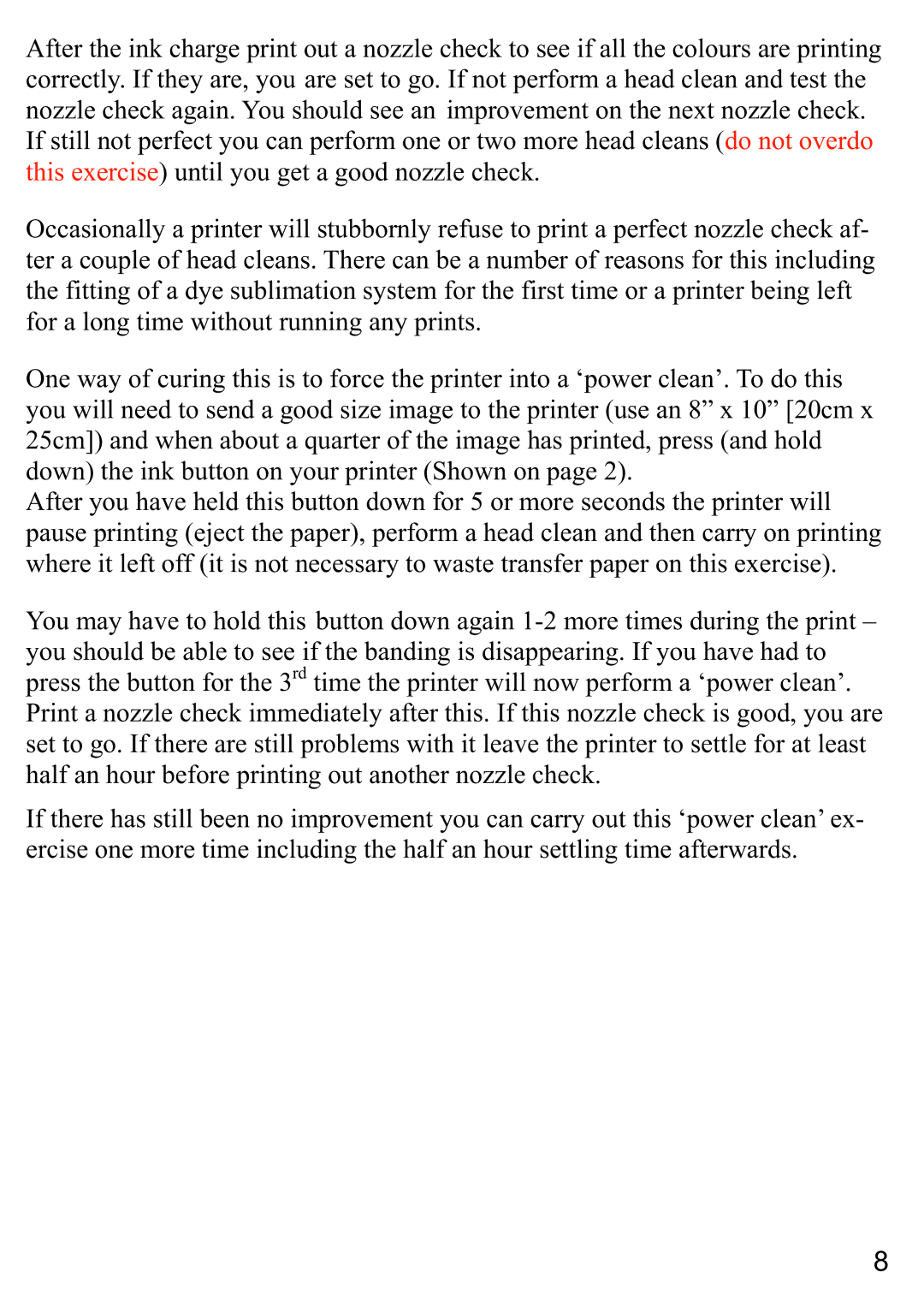After the ink charge print out a nozzle check to see if all the colours are printing correctly. If they are, you are set to go. If not perform a head clean and test the nozzle check again. You should see an improvement on the next nozzle check. If still not perfect you can perform one or two more head cleans (do not overdo this exercise) until you get a good nozzle check.
Occasionally a printer will stubbornly refuse to print a perfect nozzle check af- ter a couple of head cleans. There can be a number of reasons for this including the fitting of a dye sublimation system for the first time or a printer being left for a long time without running any prints.
One way of curing this is to force the printer into a ‘power clean’. To do this you will need to send a good size image to the printer (use an 8” x 10” [20cm x 25cm]) and when about a quarter of the image has printed, press (and hold down) the ink button on your printer (Shown on page 2).
After you have held this button down for 5 or more seconds the printer will pause printing (eject the paper), perform a head clean and then carry on printing where it left off (it is not necessary to waste transfer paper on this exercise).
You may have to hold this button down again
If there has still been no improvement you can carry out this ‘power clean’ ex- ercise one more time including the half an hour settling time afterwards.
8
